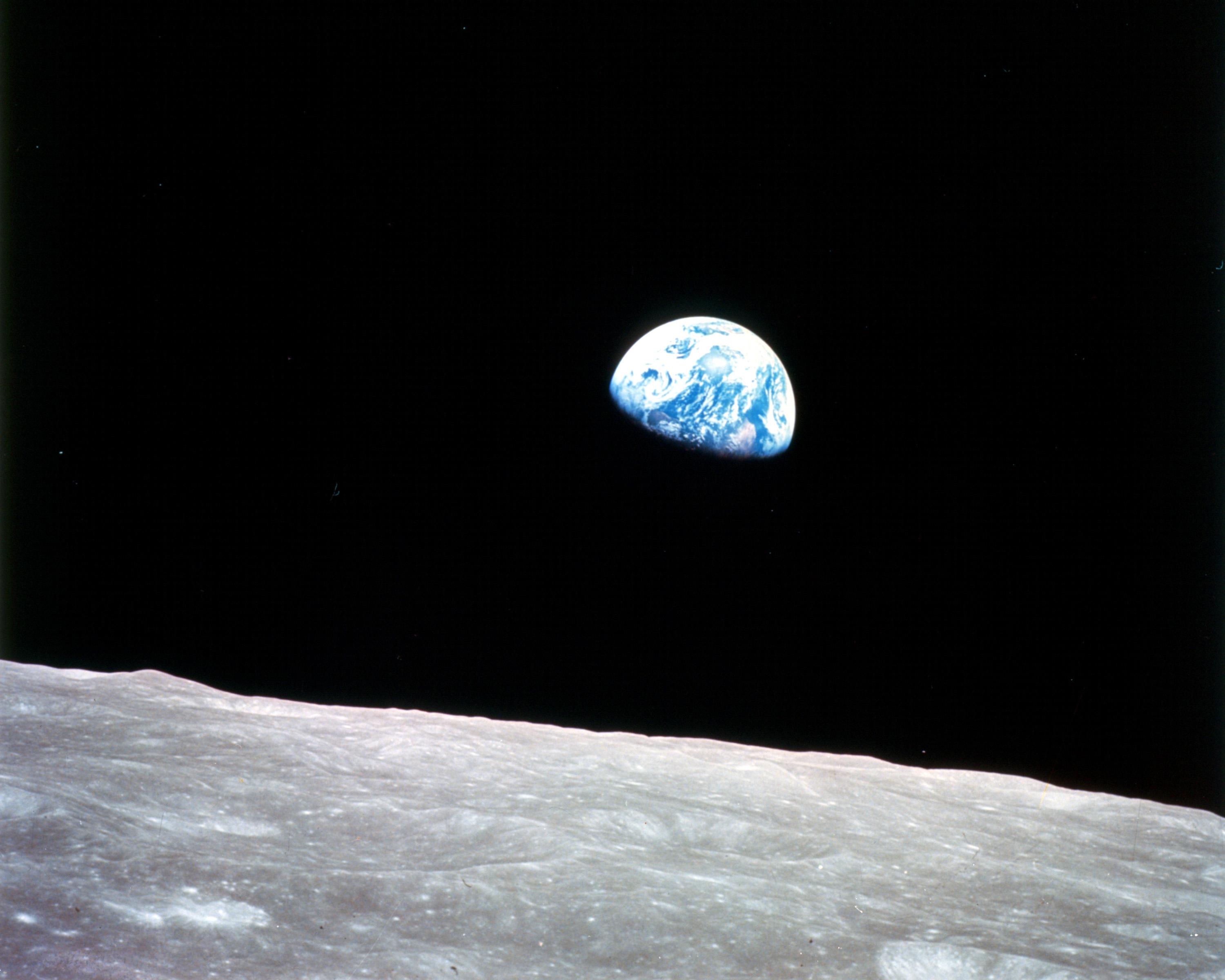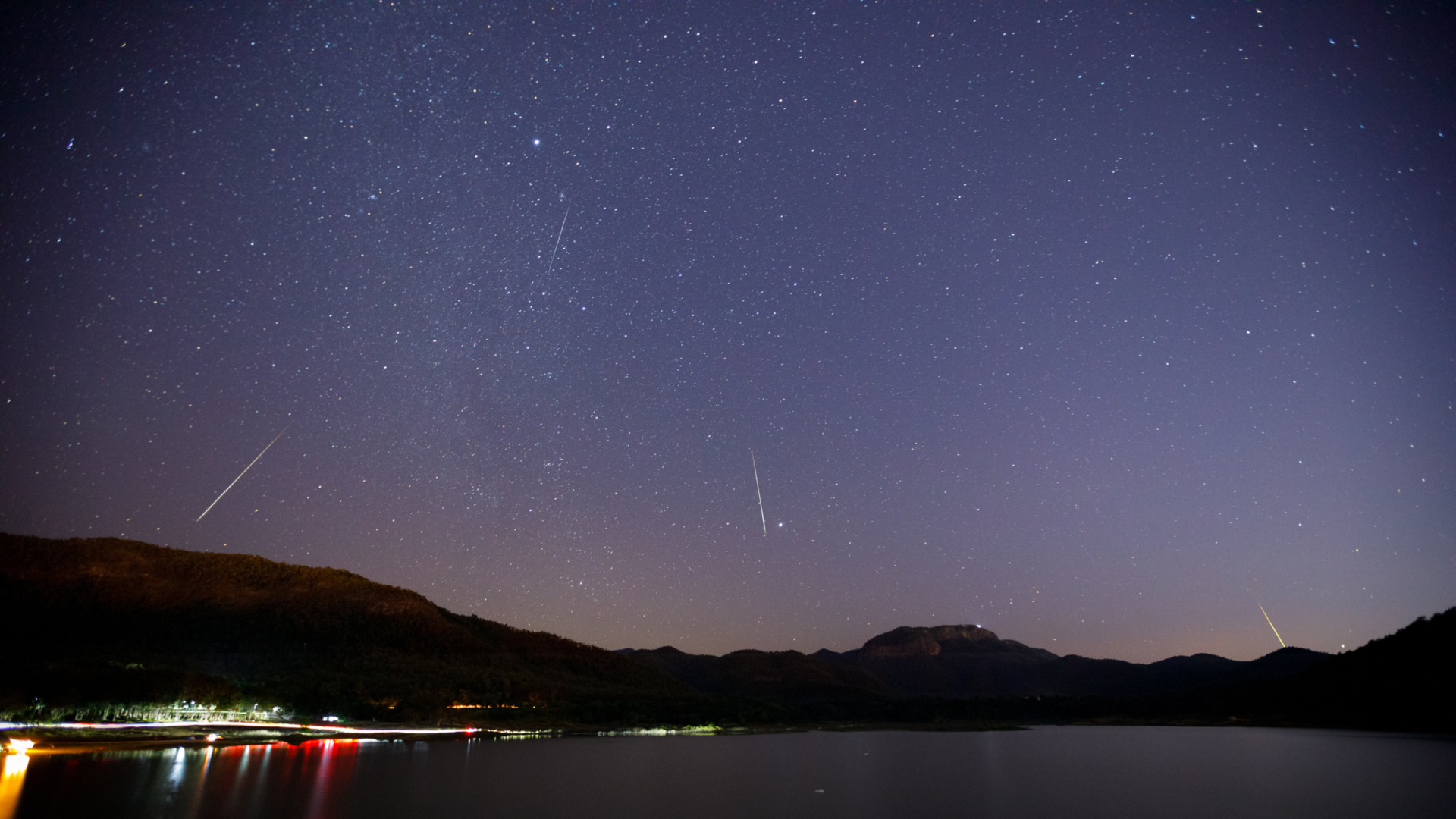Earth Day at 50: How Apollo 8's 'Earthrise' photo helped spark the first celebration

The roots of Earth Day extend all the way out to the moon.
The iconic "Earthrise" image snapped by Apollo 8 astronaut Bill Anders from lunar orbit on Dec. 24, 1968, showed our planet as it really is: a lonely and fragile outpost of life suspended in an endless, inky-black void. That new perspective jolted many people awake and lit a fire under others, helping the nascent environmental movement gain cohesion and momentum, experts say.
Among other results, that momentum led to the first Earth Day, which was celebrated 50 years ago today, on April 22, 1970.
Related: Earth Day 2020! Celebrate our home planet with these online activities
"Certainly, Earthrise raised the level of ecoconsciousness that had been stirring for almost a decade, even before Rachel Carson's 'Silent Spring' book," Kathleen Rogers, the president of the nonprofit organization Earth Day Network, wrote in December 2018 op-ed for USA Today that celebrated Earthrise's 50th anniversary. (The hugely influential "Silent Spring," which was published in 1962, described the toll that pesticides like DDT were taking on wildlife and people alike.)
"But beyond this new consciousness, Earthrise instilled a sense of urgency for those who were already on the front lines battling pollution and making the case that our health and planet were in danger," Rogers wrote. "Earthrise was a confirmation of the righteousness of the endeavor, building confidence in what was a scattered movement into something more cohesive."
As is usually the case, this impact has become clearer in retrospect. But Earthrise's world-changing potential was apparent even at the time, as the words of Apollo 8 astronaut Jim Lovell make clear.
Breaking space news, the latest updates on rocket launches, skywatching events and more!
"The vast loneliness is awe-inspiring, and it makes you realize just what you have back there on Earth," Lovell said from lunar orbit during a live TV broadcast on Dec. 24, 1968, during which the Apollo 8 crew beamed home images they had captured of Earth and the moon.
On the first Earth Day, 20 million Americans — about 10% of the nation's population at the time — rallied and marched, demanding that their political leaders take action to protect the environment.
The demonstrator's voices were heard.
"By the end of 1970, the first Earth Day led to the creation of the United States Environmental Protection Agency and the passage of other first-of-their-kind environmental laws, including the National Environmental Education Act, the Occupational Safety and Health Act and the Clean Air Act," Earth Day Network representatives wrote in a history of the now-annual event.
"Two years later, Congress passed the Clean Water Act," they wrote. "A year after that, Congress passed the Endangered Species Act and soon after the Federal Insecticide, Fungicide and Rodenticide Act. These laws have protected millions of men, women and children from disease and death and have protected hundreds of species from extinction."
Earth Day is now celebrated all over the world; it went global in 1990. And, while the coronavirus pandemic has made this year's Earth Day a mostly online experience, there are still lots of ways to participate. Find the right digital event for you via this search tool produced by the Earth Day Network.
- 50 years after 'Earthrise,' a Christmas Eve message from its photographer
- Earth quiz: Do you really know your planet?
- Earth Day 2019: These amazing NASA images show Earth from above
Mike Wall is the author of "Out There" (Grand Central Publishing, 2018; illustrated by Karl Tate), a book about the search for alien life. Follow him on Twitter @michaeldwall. Follow us on Twitter @Spacedotcom or Facebook.
OFFER: Save 45% on 'All About Space' 'How it Works' and 'All About History'!
For a limited time, you can take out a digital subscription to any of our best-selling science magazines for just $2.38 per month, or 45% off the standard price for the first three months.

Michael Wall is a Senior Space Writer with Space.com and joined the team in 2010. He primarily covers exoplanets, spaceflight and military space, but has been known to dabble in the space art beat. His book about the search for alien life, "Out There," was published on Nov. 13, 2018. Before becoming a science writer, Michael worked as a herpetologist and wildlife biologist. He has a Ph.D. in evolutionary biology from the University of Sydney, Australia, a bachelor's degree from the University of Arizona, and a graduate certificate in science writing from the University of California, Santa Cruz. To find out what his latest project is, you can follow Michael on Twitter.

